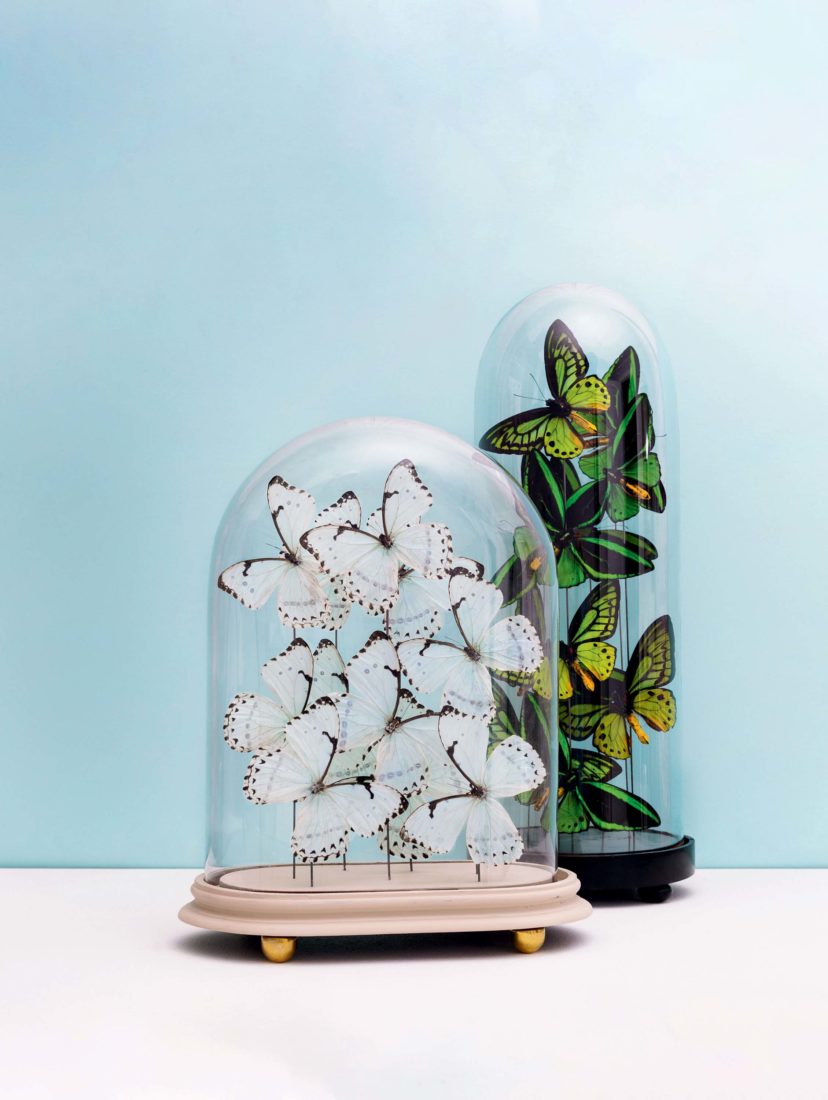After tucking her daughters into bed and watching the windows darken along her quiet, palmetto-lined street on Sullivan’s Island, South Carolina, Dawn Nakamura sits at her dining room table, front door open to the night. Humming cicadas and the occasional foghorn from the nearby harbor drift in and out of her consciousness, but Nakamura’s focus lies on the meticulous task at hand: configuring preserved butterflies and moths into three-dimensional, soul-stirring still-life displays beneath glass domes. “I think of them like flower arrangements,” Nakamura says. But instead of oleander and jasmine plucked from her yard, electric blue morphos, neon-green bird-wings, and orange-and-teal pipe-vine swallowtails transform into the showstopping centerpieces.
The art of preserving and displaying once-living creatures has existed in one form or another since the days of ancient Egypt, but it flourished during the Victorian period, when the rise of science in England coincided with an emphasis on beauty and design, propelling both taxidermy and entomology into prominence. As beetles, gnats, and flies filled the pages of popular novels by Lewis Carroll and Richard Marsh, aristocratic women donned bee brooches, and scientists and artists alike collected and exhibited butterflies and other insects.
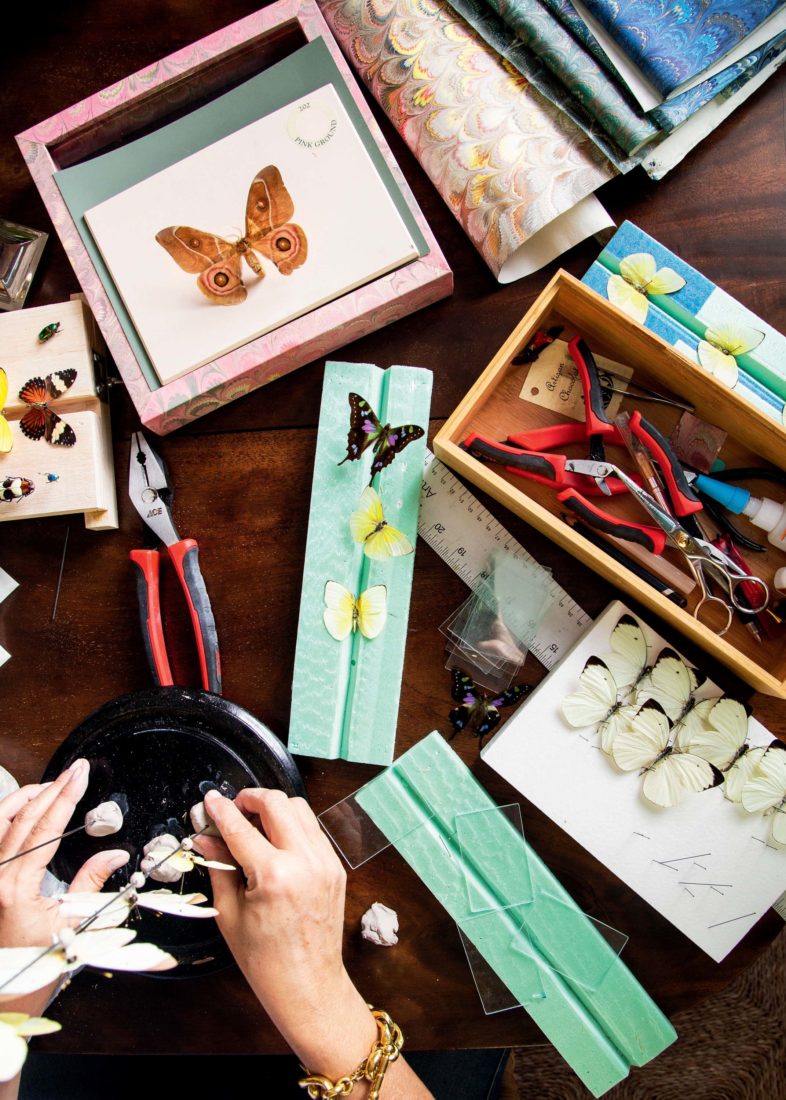
A century or so later, in 1998, Nakamura—then an interiors and furniture designer based in New York City—stumbled upon a Victorian butterfly cloche in a Paris antique shop. “I’m always looking for accessories to fill an entryway or a tabletop,” she says. “These little jewel boxes make such a statement. Elements of curiosity add charm to a space.” The frozen display called to mind Nakamura’s childhood days spent outdoors in Michigan. She figured with a little research and trial and error, she might be able to fabricate her own.
Her domes begin, of course, with the butterflies and moths, which she sources from sustainable farms and aviaries across the world that raise pollinators on land that would otherwise be developed. Some are released into the wild to propagate local populations, while others remain on-site for the duration of their short lives. On average, the insects’ adult lifespans last no more than a week or two, and when they die, farmers gather and sell them to vendors who in turn preserve and peddle them to collectors, museums, and artists.
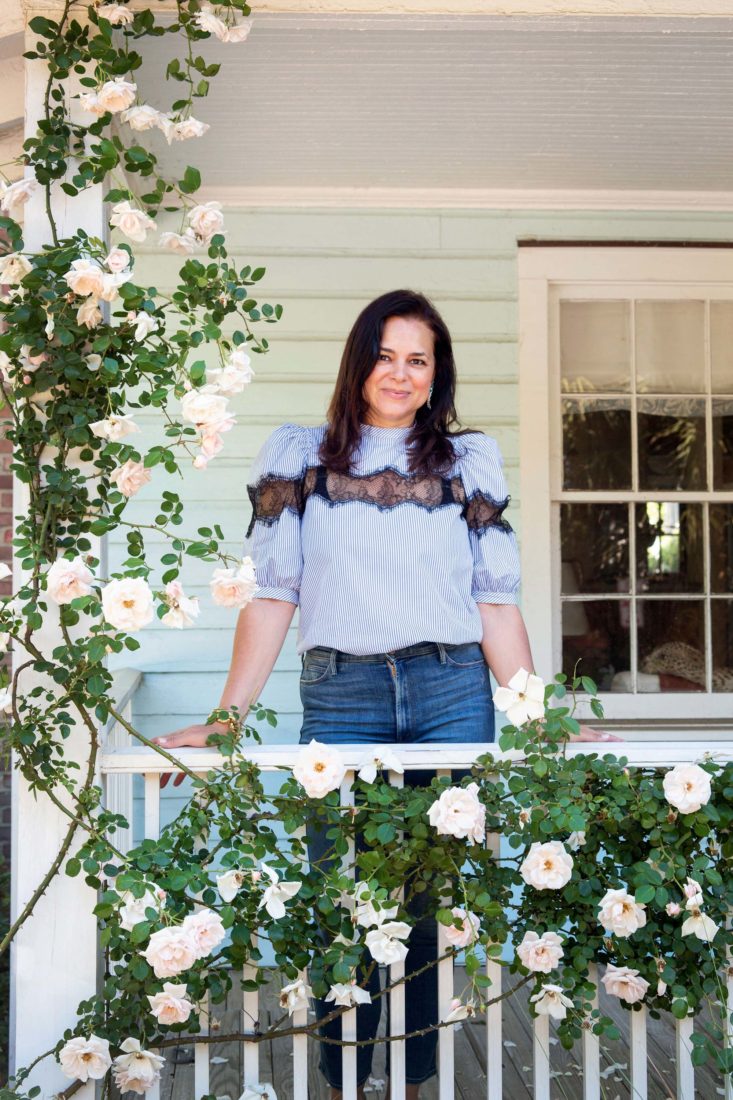
Nakamura selects her species strategically. Pink moths from Arizona’s Peña Blanca Canyon, elegant white Morpho lunas from Central America, and daisy-yellow statira sulphurs from South Florida all conjure different moods, fit for different clients. When the specimens arrive at Nakamura’s doorstep, she immediately puts them on mothballs packed with wet paper towels to hydrate and soften them. Then she pins the bodies onto a Styrofoam board and lays glass slides over the wings to set them flat, making it easier to delicately nudge the wings and antennae into position, also using pins. “They’re incredibly fragile,” she says. “You can’t touch the wings too much, or the scales will rub off.”
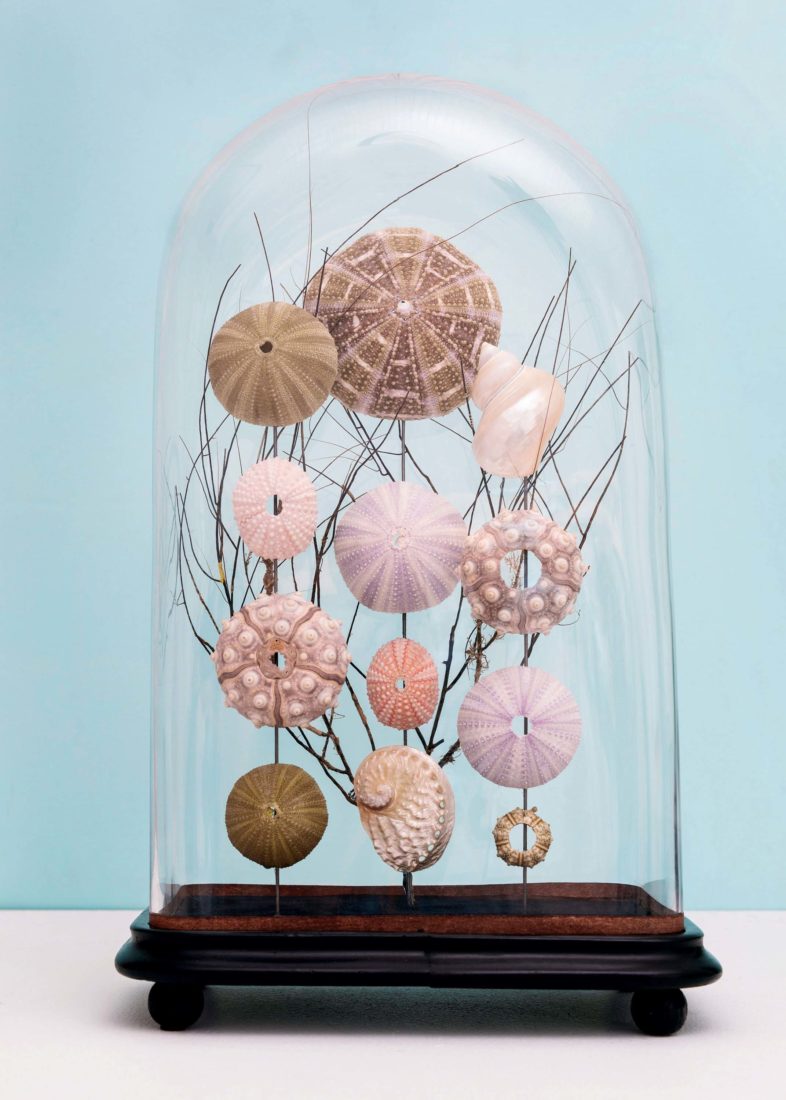
The next step must happen quickly, so on nights or early mornings when she can sit uninterrupted, Nakamura begins by temporarily mounting a vertical wire to her dome’s base and arranging small balls of clay to anchor each butterfly or moth, gently tinkering with the composition as with buds in a vase. She often positions the entire kaleidoscope (the delightful name for a group of butterflies) as if in flight, freeze-framing a fleeting moment. “Then I take out the wire, drill holes into the base, put the wire back in, and hope it still fits.” Finally, she secures an antique Victorian dome over the scene, like a transparent chrysalis sealing the insects into a final stage of existence.
Over time, Nakamura has experimented with new designs, using shells and sea urchins, or mounting butterflies in taxidermy boxes hemmed in by frames wrapped in Italian marbled paper. In her beach cottage, these creations sit alongside found objects from nature: a giant tortoise shell atop a curio cabinet, sea fans turned table toppers, a single rose—clipped from the climbing vine on her porch—floating in a handmade Japanese bowl. “This space reflects the feeling I’m trying to create in the domes,” Nakamura says. “And the best decor looks like it’s happened over time. You can’t collect everything at once.”
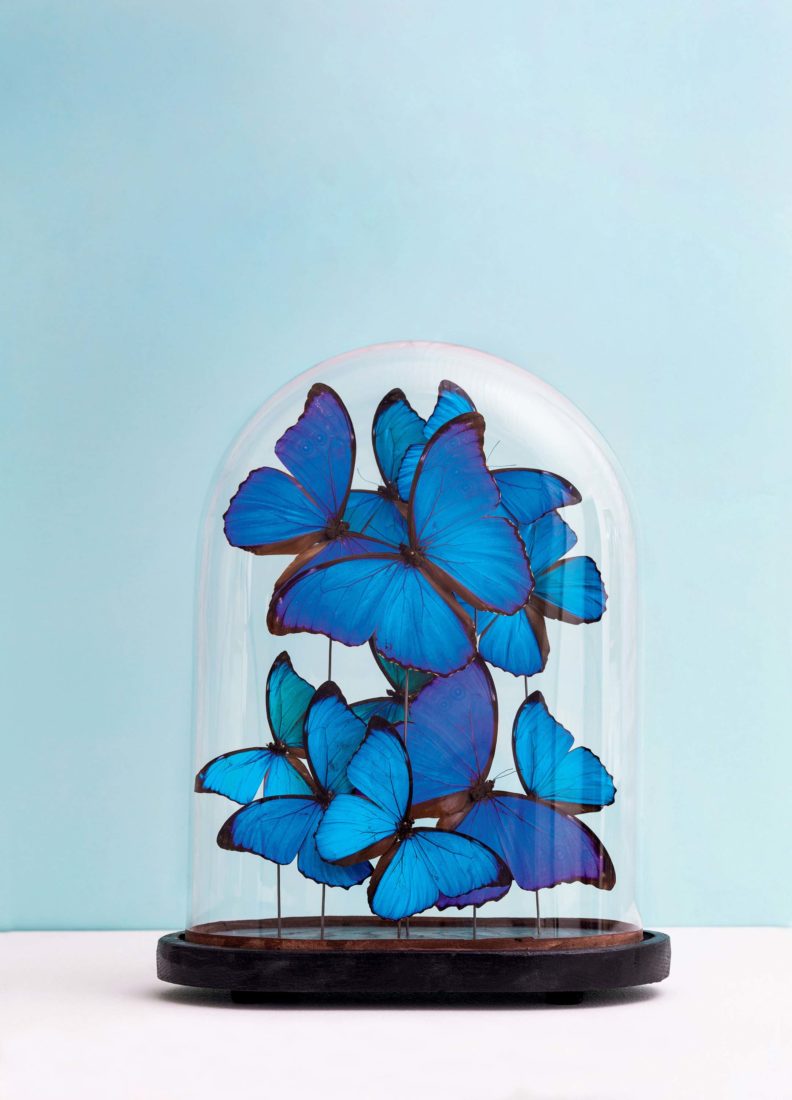
Collections, of course, breed collectors, and Nakamura has racked up a following. She has sold her pieces around the country, shipping the hyperfragile cloches through a specialty service or even hand delivering them at pit stops on her trips to New York. She sells through a few Charlotte shops, including Elizabeth Bruns, but most of her orders come directly through Instagram and her website from designers, art collectors, or friends buying gifts, whether for celebrations or as comfort for the grieving. “For whatever reason, butterflies evoke different emotions in everyone,” Nakamura says. “In some cultures, they symbolize the soul. They carry a spiritual essence.”

In her 2012 book, The Breathless Zoo, the Canadian writer and curator Rachel Poliquin posits that “far more than just death and destruction, taxidermy always exposes the desires and daydreams surrounding human relationships with and within the natural world.” So do Nakamura’s creations, simultaneously ephemeral and immortal. Her colorful kaleidoscopes rising toward the sky stir the thought that anything could happen. Perhaps if you lifted the glass, the bird-wings and morphos and swallowtails might just catch the sea breeze through the open door and flutter off into the night.


